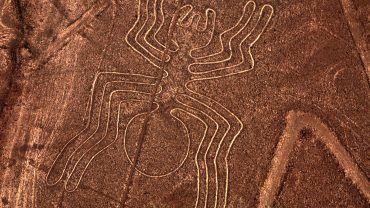He set off alone in a battered old sloop with no engine, no radio, and no company but the wind and waves — and returned three years later as the first person in history to sail solo around the world. Joshua Slocum’s epic journey should have made him a household name, yet his story remains one of the greatest untold adventures in maritime history. Who was this fearless mariner, and what became of him when he vanished without a trace?
History is littered with seafaring superstars from Ferdinand Magellan and Sir Francis Drake to Jeanne Baret and Captain Cook. To this rarified list we can add Joshua Slocum, but unlike the lauded mariners who went before him, Slocum’s solo circumnavigation of the globe often goes largely forgotten.
Who was this remarkable sailor that virtually no-one has heard of? Joshua Slocum’s book tells fantastical tales of an astonishing journey, but is it all true, and why is Slocum’s disappearance a mystery that has yet to be solved? It’s time to drop anchor and dive into Joshua Slocum’s sea of adventures.
The Early Years of Joshua Slocum

Slocum grew up surrounded by the sea in Nova Scotia (Credit: Diana Robinson Photography via Getty Images)
Born in February 1844 in the Canadian province of Nova Scotia, Joshua Slocum grew up in a large family with deep roots in the region. From a young age, he was drawn irresistibly to the sea, finding the salt air far more compelling than the confines of his father’s leather boot shop. When he was fourteen, he ran away from home to work on a fishing schooner but returned soon after. Within two years, he was gone for good.
In 1860, at the age of sixteen, Slocum left home to pursue a life at sea. The birth of his tenth sibling and the death of his beloved mother had marked a turning point. As the fifth of eleven children, he sought freedom on the open ocean, quickly rising through the ranks aboard merchant vessels that sailed to ports around the world.
His seafaring career began with a voyage from Halifax, Nova Scotia, to Dublin, Ireland. From there, he crossed the Irish Sea to Liverpool, where he joined the British ship Tangier, bound for China. By the age of eighteen, Slocum had already rounded Cape Horn twice – one of the most treacherous stretches of water in the world – and sailed to destinations including Batavia (now Jakarta), the Philippines, Vietnam, Hong Kong, Singapore, the United Kingdom, and the west coast of America. During this time, he also earned his certification as a Second Mate and eventually rose to the rank of Chief Mate.
He settled in San Francisco and spent time in Oregon as a fur trader and salmon fisherman. Slocum’s circumnavigation was still almost three decades away, but he’d already lived a remarkable life, which was only destined to get more notable.
The Prelude to Slocum’s Circumnavigation of the Globe
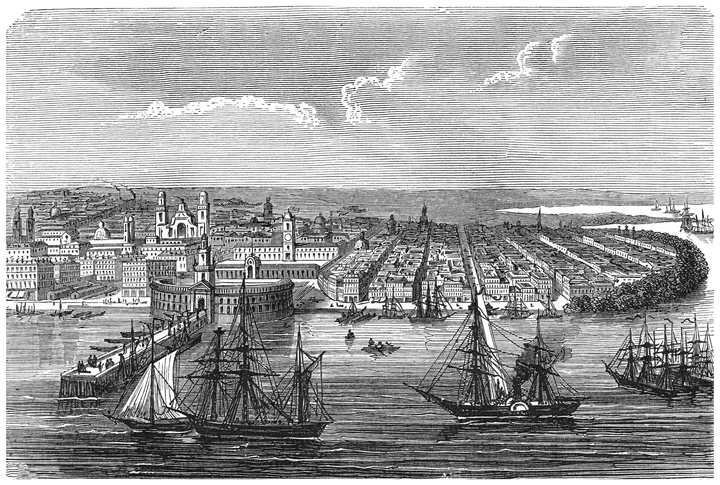
Slocum sailed all over the world, docking in Buenos Aires in the 1880s (Credit: mikroman6 via Getty Images)
From the late 1860s, Joshua Slocum’s life became inseparable from the sea. In 1869, he received his first blue-water command as master of the barque Washington, sailing from San Francisco across the Pacific to Australia and returning via Alaska. Over the next two decades, he commanded a succession of ships – first as an employee and later as an owner – trading cargo between North America, Asia, Australia, and the Pacific islands. His time as a captain was marked by both adventure and adversity, including shipwrecks, mutinies, and the challenges of navigating some of the world’s most treacherous waters.
In 1871 he married Virginia Albertina Walker and she accompanied him all over the world. Over the next thirteen years, they had seven children, only four of whom survived into adulthood. Virginia became ill when their ship, the 296-tonne Aquidneck, docked in Buenos Aires and she died in 1884. Two years later, Slocum remarried, this time to Henrietta ‘Hettie’ Elliott, who also sailed with him for a while, but she didn’t have his sea legs.
A Waning Career on the Ocean Waves
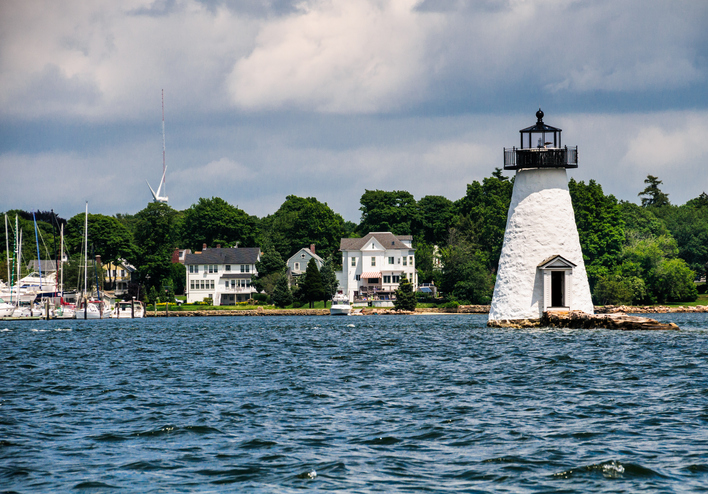
The shoreline in Fairhaven, with Palmer's Island Lighthouse (Credit: KenWiedemann via Getty Images)
In the years leading up to Slocum’s solo circumnavigation, his reputation as a skilled and resourceful mariner grew. He built and repaired vessels, including the Pato – a schooner he received as partial payment for shipbuilding work in the Philippines – which he used for trading along the Pacific coast. He also became a writer for the San Francisco Bee, foreshadowing his later success as an author. Despite his accomplishments, the rise of steamships and changing times eventually left him struggling for command and financial stability.
By the early 1890s, Slocum’s fortunes had waned. With few opportunities left in a world moving away from sail, he was given the derelict, eleven-metre long hull of an old oak and yellow pine oyster sloop, the Spray, in Fairhaven, Massachusetts. Drawing on his vast experience, he rebuilt the vessel over thirteen months between early 1893 and early 1894, setting the stage for him to become the first person to sail around the world single handedly.
Sailing into Immortality
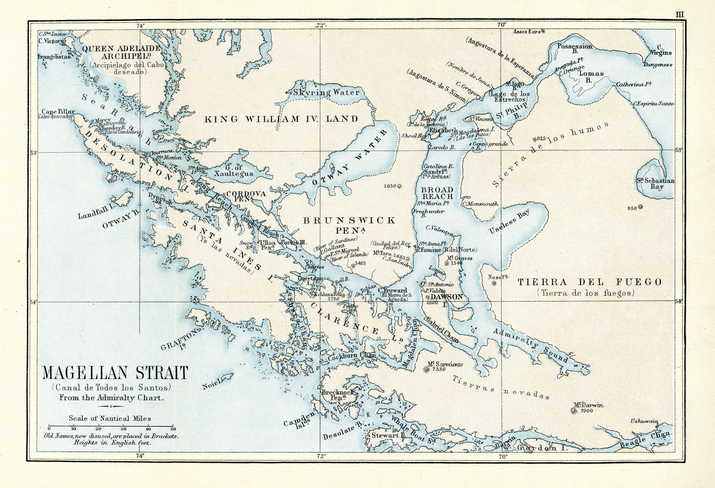
The Strait of Magellan is a notoriously hazardous stretch of water (Credit: duncan1890 via Getty Images)
Joshua Slocum’s solo circumnavigation aboard the Spray lasted just over three years, spanning from April 24, 1895, to June 27, 1898, and covering more than 74,000 kilometres.
After departing Boston in April 1895, Slocum sailed north to visit his old home on Brier Island, Nova Scotia, before officially beginning his journey past the Sambro Island Lighthouse. He crossed the North Atlantic to the Azores and Gibraltar, then turned south to the Canary Islands, avoiding the Mediterranean due to piracy fears. By late 1895, he crossed back over the Atlantic to South America, making stops in the Cape Verde Islands and Recife, Brazil, before heading down the coast to Rio de Janeiro, Montevideo, and Buenos Aires.
Demonstrating extraordinary seamanship, Slocum navigated the notoriously hazardous Strait of Magellan. After weather delays, he crossed the Pacific in 1896, stopping at the Juan Fernández Islands, Samoa, and Fiji, before reaching Australia in October. He continued north via Thursday Island and the Cocos (Keeling) Islands, then visited Rodrigues and Mauritius en route to South Africa, rounding the Cape of Good Hope by mid-1897.
On the final leg of his voyage, he stopped at St. Helena and Ascension Island, then retraced his path through the Azores and across the Atlantic, completing his solo circumnavigation at Newport, Rhode Island, on June 27, 1898.
Three years, two months and three days after he left, Joshua Slocum returned to the USA, however, astonishingly for such an achievement, his homecoming went almost unnoticed. Eight weeks before his return, the Spanish-American War started which, understandably, dominated the column inches, but his journey was documented in the papers when hostilities ceased.
Sailing Alone Around the World

Slocum's book has sold millions of copies (Credit: Sarah Murray via Getty Images)
Slocum’s book – Sailing Alone Around the World – was a landmark in maritime literature and solo navigation. Upon its publication in 1900, it captivated readers with its vivid storytelling, practical seamanship, and self-deprecating humour.
English poet and journalist Sir Edwin Arnold called it “the most extraordinary book ever published.” Slocum’s memoir became an immediate success and was highly influential, inspiring later generations of sailors and adventurers.
The Disappearance of Joshua Slocum
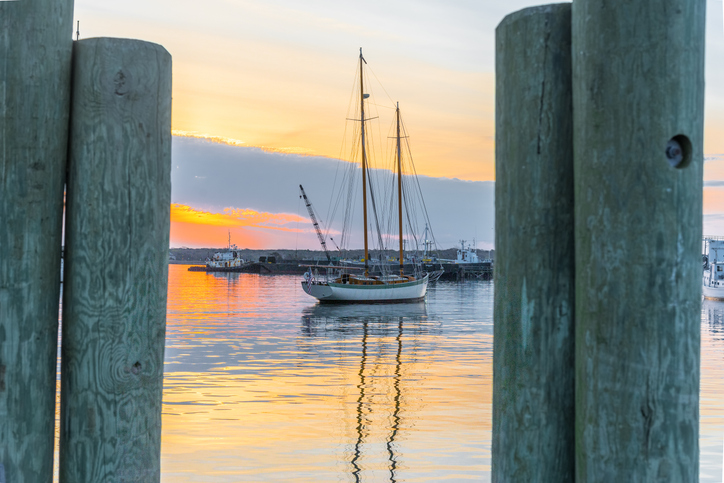
Slocum left Vineyard Haven in November 1909. He was never seen again (Credit: Gary D'Ercole via Getty Images)
In the years that followed, Slocum lived comfortably off the back of book sales and public speaking engagements. He bought a farm on Martha’s Vineyard in Massachusetts. Yet, try as he might, he couldn’t adapt to life on land and spent more and more time on the Spray.
By 1908, speaking engagements and book sales were few and far between, and money was running low. It’s believed he was making arrangements to sell his farm and preparing for a new adventure on South America’s rivers, the Orinoco, Rio Negro and Amazon.
On November 14, 1909, at the age of sixty-four, Slocum left Vineyard Haven, a small port on Martha’s Vineyard, destined for Grand Cayman in the West Indies. He was never seen or heard from again.
The most widely accepted explanation is that Slocum and the Spray were lost at sea, possibly due to rough weather, a collision, or the vessel’s declining seaworthiness. Remarkably, despite being a world-class sailor, Slocum is said to have never learned to swim. More speculative suggestions include the possibility he deliberately left his life behind due to financial hardship or a broken marriage, or he may have simply wanted to live out his days in the Caribbean.
More outlandish theories point to the fact that his disappearance may have occurred in or around the Bermuda Triangle, or that he may have committed suicide, but there’s no evidence to support any of the theories.
In July 1910, his wife Henrietta told the newspapers that he’d disappeared without trace and she believed he was lost at sea. It wasn’t until 1924 that Joshua Slocum was legally declared dead.
The Legacy of Joshua Slocum
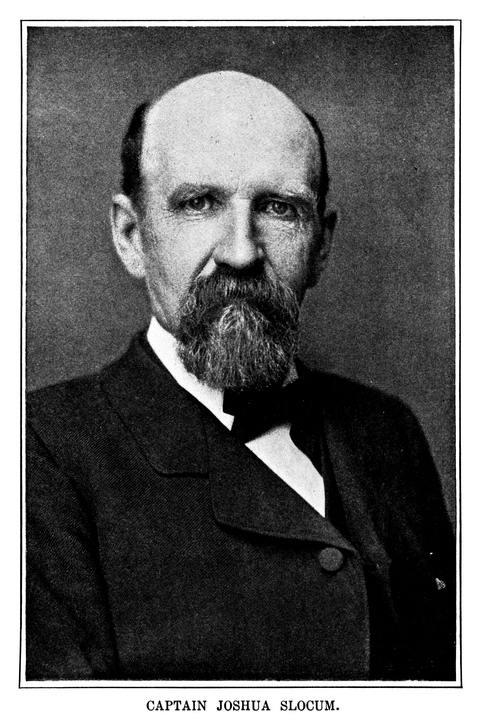
Captain Joshua Slocum (Credit: benoitb via Getty Images)
Joshua Slocum’s legacy is that of a trailblazing sailor and an inspiration to adventurers everywhere. As the first person to sail around the world solo, he showed what determination and skill can achieve. His book is a classic of maritime literature that continues to influence sailors and dreamers alike.
The Spray, his trusty sloop, became a symbol of ingenuity and, even today, boats are still named Spray in his honour.


